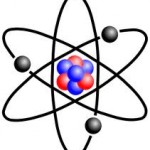Next tour: Sat 20 October 2018 (Science Festival tours).
Meet: Art Gallery entrance, 2.30pm.
Most scientists do well to dominate thinking in one discipline; John Dalton came up with three.
Arriving in Manchester in 1793 to teach maths, he engaged in pioneering work into the very nature of matter at the Literary & Philosophy Society’s headquarters on George Street (destroyed in the second world war) and there calculated that the basic form of all substances was the atom.
He revealed his findings on atomic theory in 1803 through work on olefiant gas and carburetted hydrogen, published a list of atomic weights, and explained how compounds are formed by the chemical reaction of atoms of different elements.
This startling development revolutionised scientific thinking and led to Manchester becoming one of the world’s leading cities of science, a position which it still holds thanks to recent inventions at the university.
 But Dalton was busy with other phenomena. He performed ground-breaking work into colour blindness, from which he suffered. The word for the affliction in various European languages includes his name – Daltonisme in French, Daltonismo in Italian – but not in English, alas.
But Dalton was busy with other phenomena. He performed ground-breaking work into colour blindness, from which he suffered. The word for the affliction in various European languages includes his name – Daltonisme in French, Daltonismo in Italian – but not in English, alas.
His third great achievement? He kept copious weather records in Manchester for decade after decade, explaining to astonished locals that it rained a lot.
